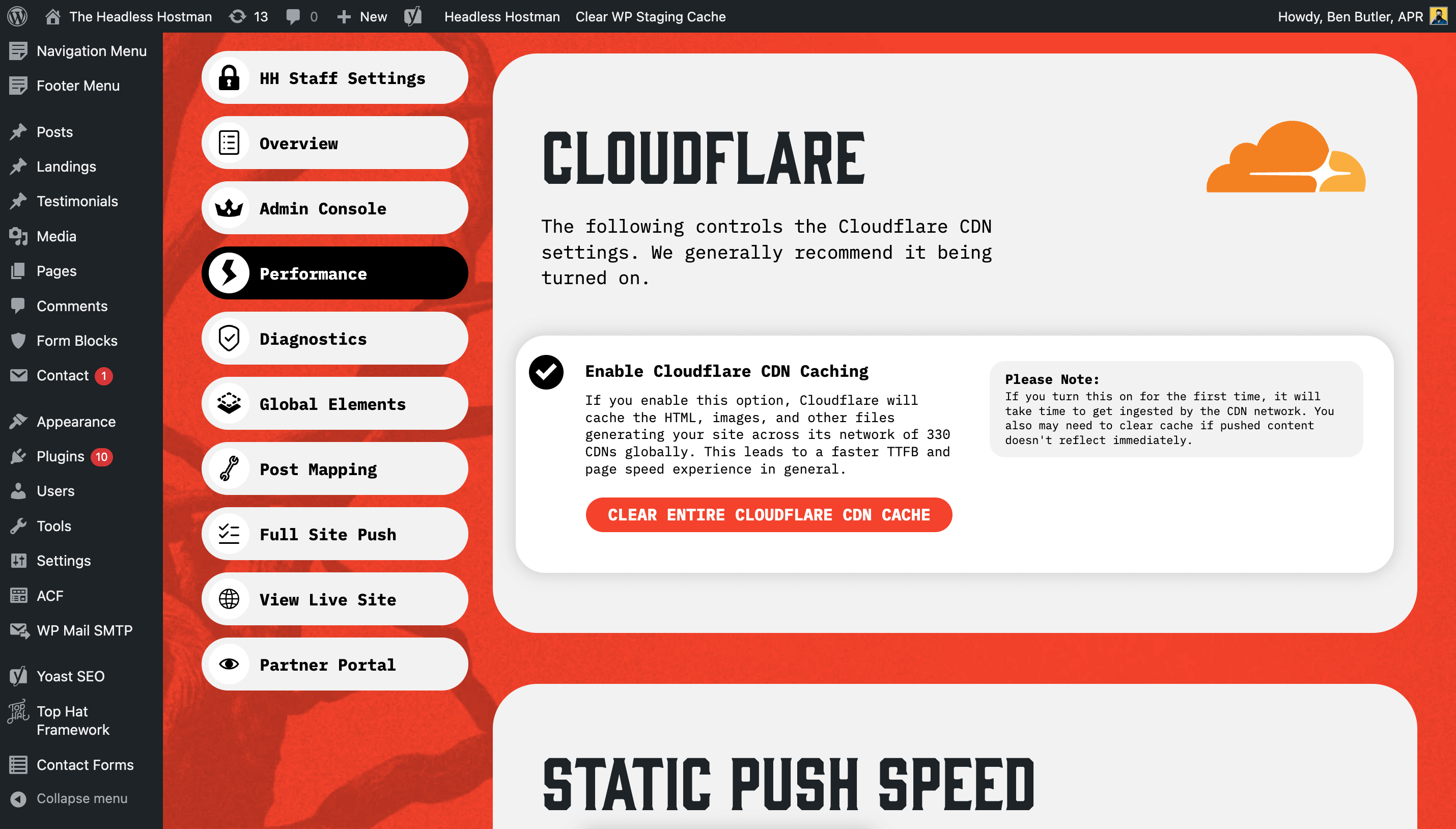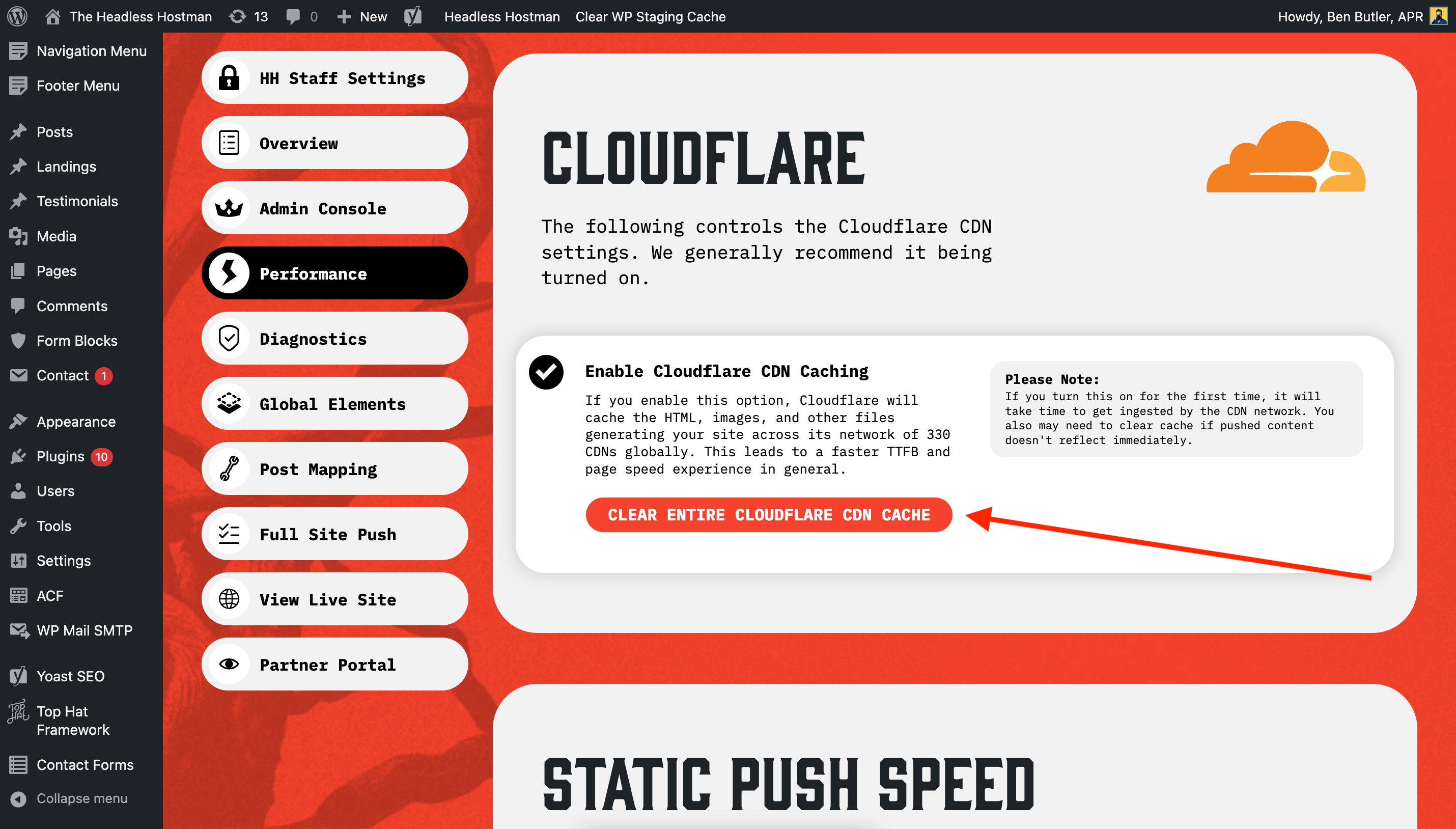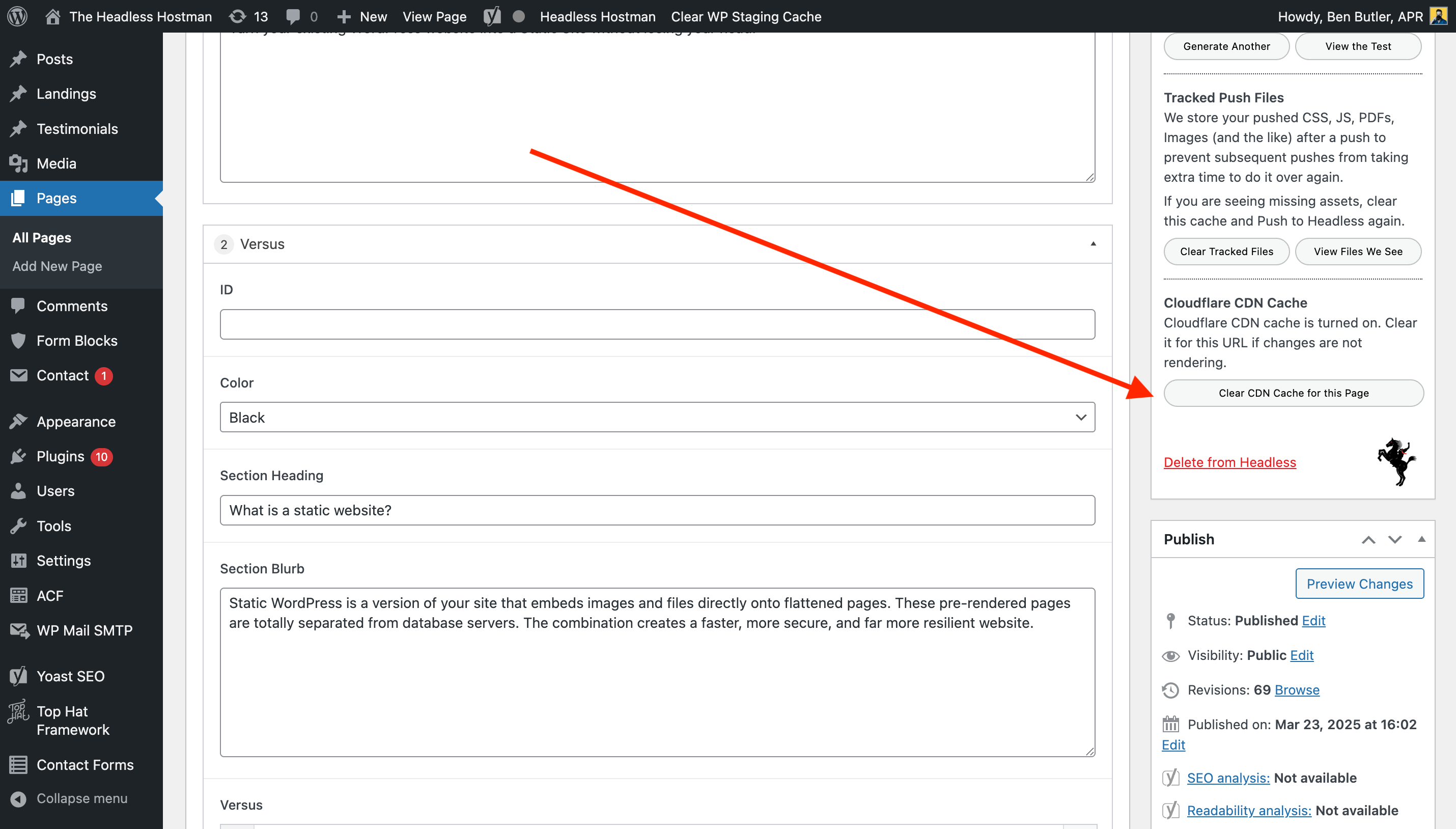Introducing "Cache Everything:" Our Fastest Cloudflare CDN Integration Yet
Cloudflare has been making upgrades to its network and product, which has given us more opportunities to bring speed directly to your Static WordPress websites.
The first of many improvements is a new Cloudflare integration rule to cache full HTML pages (not just assets). Click a button and we’ll do the rest within Cloudflare.
Beyond that, we don’t just tell Cloudflare to cache pages aggressively. We’ve integrated with a Cache Warming service to make sure your site is always in the best position to serve cached pages without intervention.
Here’s the difference on how this service works, and how we give you all the controls you need to manage it.
Origin Hosting vs. Cached on the Content Delivery Network
Origin Hosting
We’ve always deployed your static pages to Cloudflare’s infrastructure. By default, assets are distributed to Cloudflare’s storage and hosting layer. Let’s call this “Cloudflare Origin.”
This setup has always delivered exceptional performance out of the box with an average <180ms Time to First Byte. That’s roughly 4× faster than traditional WordPress hosting.
- Time to First Byte (TTFB) is the amount of time it takes for your browser to start receiving data from a website after you click a link. Basically, how long it takes before the first bit of the page begins to load.
- It is the responsibility of your site hosting server, and it is integral to the foundations of actual user speed experiences and metric grading by the dreaded Google Page Speed (amongst others).
Headless Hostman Default Cloudflare Metrics

Versus a WP Engine Site with GES
You can see WP Engine, even with aggressive caching enabled, lags behind in those very same regions.

Fully Cached Live Sites at the Cloudflare Edge
Now, when a response is cached at the edge, Cloudflare can serve it directly from the nearest data center with no origin pulls at all. That’s where the next-level speed boost happens, both in measured TTFB and in real-world “perceived” speed.
With this enabled, we’re now seeing average TTFB under 120ms, and in some regions, even lower.
Headless Hostman with Cache Everything Enabled

What “Cache Everything” Actually Means

“Cache Everything” tells Cloudflare to treat text/html like the static resource it truly is (just like JS, CSS, and images), allowing it to be stored and served from a replicated copy stored as close to the site user as possible.
Once active, Cloudflare replicates your site’s static pages across 330+ global CDN locations, ensuring near-instant delivery everywhere.
Before you ask, no, this isn’t part of Cloudflare’s default behavior, especially for those leveraging Cloudflare’s static pages network.
It requires explicit cache expression rules. By default, Cloudflare only caches JS, CSS, and images.
The Power’s Yours: Turn It On or Off
The default network is already fast, and this makes it faster. But the power is still your’s to turn it on and off within seconds.
To enable:
- Head to the Performance tab.
- Scroll to the Cloudflare section (second section).
- Check the box.
- We handle everything else automatically within Cloudflare’s settings.
- The results are instant (besides a slight ramp up period to build the Live site caches)

When You Might Want to Turn It Off
This feature benefits 99.9% of users. The only time you might disable it is if your site’s content updates extremely frequently (like multiple times per minute).
Who Can Use It
- Customers using our default (and preferred) Cloudflare network.
- This feature is not available on AWS.
- Customers with domains fully integrated into Cloudflare DNS.
- Customers with launched websites (not pre-launch “test” domains living on pages.dev).
This Makes Live Site “Cache Clearing” a New Requirement, and We Deliver the Goods
This new feature delivers a heavily cached live experience.
This means content updates may not appear instantly. If you’ve been around the WordPress world with the slew of caching Plugins, or aggressively cached hosting services, this shouldn’t come as a shock to you.
That’s why we built cache-clearing tools directly into your Headless Hostman dashboard.
Nuke It All
In the Performance area, you can clear the entire Cloudflare site cache in one click:

Clear a Specific Page, Only
Or, as we recommend, clear only the specific page you’ve just updated — right from the page or post options panel:

Taking It Further: Warming Cloudflare Cache with PageSpeedPlus
There is one quirk to any cache. It requires the URL to be hit before it will serve the “cached” result on the next request.
Short of you just letting it ride, or you doing this yourself, we’ve solved this issue for you by incorporating “cache warming” by integrating our product with PageSpeedPlus.
- When you turn on the Cloudflare “Enable CDN caching” we will send the site to PageSpeedPlus to make sure the cache is always warmed.
- When you turn it off, we disable it from being warmed
This insures your site is always serving cached link hits, and the ultimate in speed. Especially as you clear caches and manage your site.
Why We Picked PageSpeedPlus for This
We take our vendor choices seriously. After experimenting with a curated list of candidates, we were impressed by the service offering of PageSpeedPlus.
They approach Cache Warming by your sitemap, insuring a thoroughness.
We were also particularly impressed by how easy the API is to work with, which keeps the experience automated and turn-key for our customer base from click on, to click off.
Other Features in the Works
Our product roadmap includes the following additional features. We’ll update the page as we complete them:
- An option in Full Push to completely clear Cloudflare live site cache (if enabled) after a Push completes
- Automated post-mapping settings to clear specific pages or post types on a Cron schedule
Deeper into the Abyss


